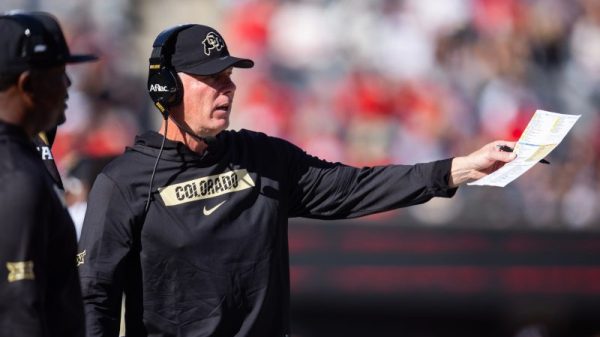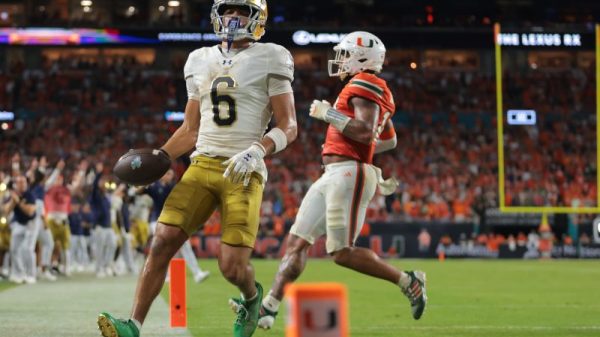There are two primary theories for how the coronavirus that causes covid-19 first infected humans.
The first is that it was transmitted from an animal to a human, perhaps (or most likely) at a market in the Chinese city of Wuhan. The other holds that the virus infected an employee at the nearby Wuhan Institute of Virology and spread from there.
The argument for the former is a mix of direct and circumstantial. Early confirmed cases of covid-19 were “centered around the Huanan Seafood Wholesale Market,” a 2022 report explained. What’s more, “the data statistically located the earliest human cases to one section where vendors of live wild animals congregated and where virus-positive environmental samples concentrated.” Past human infections with novel coronaviruses followed the animal-to-human pathway, hardly conclusive proof but a consideration that led to initial assumptions about what had occurred.
The argument for what’s now known as the “lab leak” theory is almost entirely circumstantial. The central consideration is that there were coronaviruses being researched at a facility in the city where the virus first emerged. In May 2021, the Wall Street Journal reported that several lab workers had been hospitalized with symptoms consistent with covid-19 in November 2019, which would likely have been the first known cases. But it’s not clear that those were covid-19 infections (the symptoms were also consistent with “common seasonal illness”), and there was not then a known outbreak of cases associated with the hospital, undercutting the idea that the highly contagious virus was the cause.
These two possibilities haven’t changed much since the earliest days of the pandemic. In February 2020, Sen. Tom Cotton (R-Ark.) included them among four hypotheses for the origins of the virus. The other two were derivatives of the lab-leak theory: that it leaked after having been intentionally strengthened to serve as a bioweapon or that it was released intentionally as a weapon. Those latter two theories were quickly rejected by scientists, although each has continued to bubble in the years since.
Cotton’s hypotheses were actually a response to an article in The Washington Post that contrasted his comments in a Fox News interview with the scientific consensus. Host Maria Bartiromo asked Cotton to respond to comments from China’s ambassador to the United States in which the ambassador “called the notion of biological warfare, quote, absolutely crazy.”
Cotton’s response didn’t differentiate his views from the idea that China was engaged in biological warfare.
“The burden of proof right now is on the Chinese Communist Party and the ambassador of China and his fellow communists,” Cotton replied. “They have lied consistently about this virus from the beginning, so we should not take his word at face value.”
Generally, though, Cotton’s comments were cautious: It wasn’t clear how the virus originated (to Fox News’s Laura Ingraham, he said, “I still think the most natural hypothesis is that it was naturally occurring”), and we shouldn’t trust China to be forthcoming about what had occurred. The Post article’s initial framing — that Cotton was amplifying a debunked conspiracy theory — centered on the bioweapon allegation but was later corrected to better acknowledge uncertainty about the possibility of an innocuous leak from a lab.
This distinction — between a leak of a virus being catalogued or studied and a leak of a constructed supervirus — polluted other assessments of how the virus emerged. The Associated Press’s December 2020 assessment of covid-19 claims that had been debunked centered not on a leak from a lab but, instead, on the virus being man-made. Facebook’s initial policy on claims about the origins of the virus was to block sharing of claims that the virus had been man-made, not that it had escaped from the lab. (It reversed that policy in 2021.)
All of this unfolded in an increasingly politicized environment around the virus. President Donald Trump transitioned quickly from exonerating Chinese leaders (in the wake of a trade agreement he had signed in January) to using China as a foil for the damage wrought by the pandemic. He took to calling covid-19 the “China virus” as he increasingly blamed China for how it had spread.
When Fox News reported in April 2020 that it had sources linking the spread of the virus to a leak from the lab, Trump at first said only that “more and more, we’re hearing the story.” A few days later, he said he had seen evidence giving him a high degree of confidence that the lab was the source of the virus.
“Whether you had the theory from the lab, you had the theory from many different — the bats, and the type of bat, and the bat is 40 miles away, so it couldn’t have been here, and it couldn’t have been there,” he said. “And we have a — there’s a lot of theories. But, yeah, we have people looking at it very, very strongly.”
By the time Trump left office the following January, he had established himself as a lab-leak adherent. The rationale isn’t complicated; asked to side either with or against the scientific community and scolds in the media who had proactively rejected the man-made virus theory, Trump chose “against.” Every new shred of discussion that bolstered the idea that the virus might have leaked from a lab was tacked onto Trump’s favorite post-presidency argument: that he had been right about everything all along, including the lab.
Again, though, this isn’t just Trump. Many Americans (largely on the right) who were skeptical about how official actors had addressed the pandemic saw the lab-leak theory as an example of overreach akin to closing schools or mask mandates. The media and government had suppressed the truth, they argued — often relying on cherry-picked rejections of the theory — part of a consistent pattern of mistakes or clumsy authoritarianism.
Over the weekend, the Journal reported that the Energy Department had come to the conclusion that the pandemic was likely a function of a leak from the Wuhan lab. That determination comes from a classified report given to Congress in which the views of government agencies are indexed. The Energy Department, like the FBI, thinks a lab leak is more likely than a natural emergence. A number of other agencies, though, including the National Intelligence Council, say that natural emergence is more likely.
According to the Journal, both those natural emergence theories and the Energy Department’s assessment were offered with “low confidence” — meaning that their assessments are weakened by uncertain evidence or sourcing.
In other words, the Journal story was an incremental shift in favor of the lab leak theory, but hardly a determinative one. The Journal’s editorial page, a politically conservative body, nonetheless wasted no time claiming victory. The report is “more evidence that the media and public-health groupthink about Covid was mistaken and destructive.” They also claimed that their April 2020 op-ed from Cotton elevating the lab-leak theory led to “[t]he media conformity caucus immediately derid[ing] Mr. Cotton” as The Post article had … despite our article having been published two months earlier.
In the past two years, as the acute danger of the pandemic has waned, the debate over the origin of the pandemic has been centered on a slightly different set of political priorities. It’s not about absolving Trump of culpability for the U.S. response as much as it is about doing what the Journal editorial board did: blaming the media and scientists — and by unspoken extension, the political left — for trying to silence the “truth” about the lab. It’s also about using the origins of the pandemic in the way that Cotton always intended: to reinforce China as a bad actor and a dangerous geopolitical opponent of the United States.
Again, it’s still not clear how the pandemic emerged. It may end up be that it did somehow escape from the lab in Wuhan, which would prompt a number of other questions if it turns out to be so. It remains very plausible in the moment, if not more plausible, that the virus spread first from an animal to a human at the Wuhan market (despite Cotton’s February 2020 insistences that this was known to be false).
What is clear, though, is that any new report bolstering the idea that the virus leaked from a lab will be used to score political points. Anyone looking to dunk on China or the media or the scientific community or President Biden or authority figures of any range of occupations and authorities can engage in a new round of I-was-right-all-along posturing.
And, who knows. Maybe those people will even end up actually being right.



























